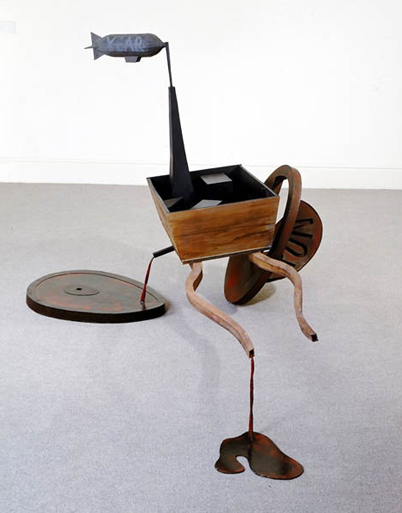Andrew Graham-Dixon on new work by the sculptor Bill Woodrow at the Imperial War Museum
THESE DAYS, the Imperial War Museum is a cleaner, smarter, more consumer-friendly place than it used to be. True, those famous gun-barrels still threaten all-comers from in front of the main porch, but once inside you are enjoined to discover that learning all about war can really be quite fun. The Museum, whose gloomily labyrinthine installation once seemed appropriate to its theme, now looks as efficient and as gleamingly impersonal as the hardware of modern military technology.
The IWM has gone high-tech: sitting in the cafe, a message flickering across one of the Museum's ubiquitous television monitors reminds you not to leave without taking advantage of 'The Blitz Experience', a once-in-a-lifetime opportunity to enjoy the sights and sounds and even the smells of wartime bombardment, without the risk of personal extinction. It all doubtless helps to augment the attendance figures and revenue, but is somewhat disconcerting nonetheless.
In this context, the six new sculptures by Bill Woodrow currently occupying one of the IWM's temporary exhibition galleries, are both subversive and salutary. Inspired by the contents of the Museum, they are a reminder that war has not traditionally been notable for its entertainment value.
In the past, Woodrow has tended to disarm the viewer with the playfulness of his constructions, a palliative perhaps for their underlying seriousness. War, and the human impulse to violence, have been abiding concerns, treated with a kind of cartoonish wit. The new work is unusually blunt, Point of Entry characteristically so: what looks like a human stomach, made in cast bronze (as is all Woodrow's new work, a radical departure from previous procedure), spilling entrails that spell the words 'Mum' and 'Dad'.
All the sculptures in this show look crippled in...


